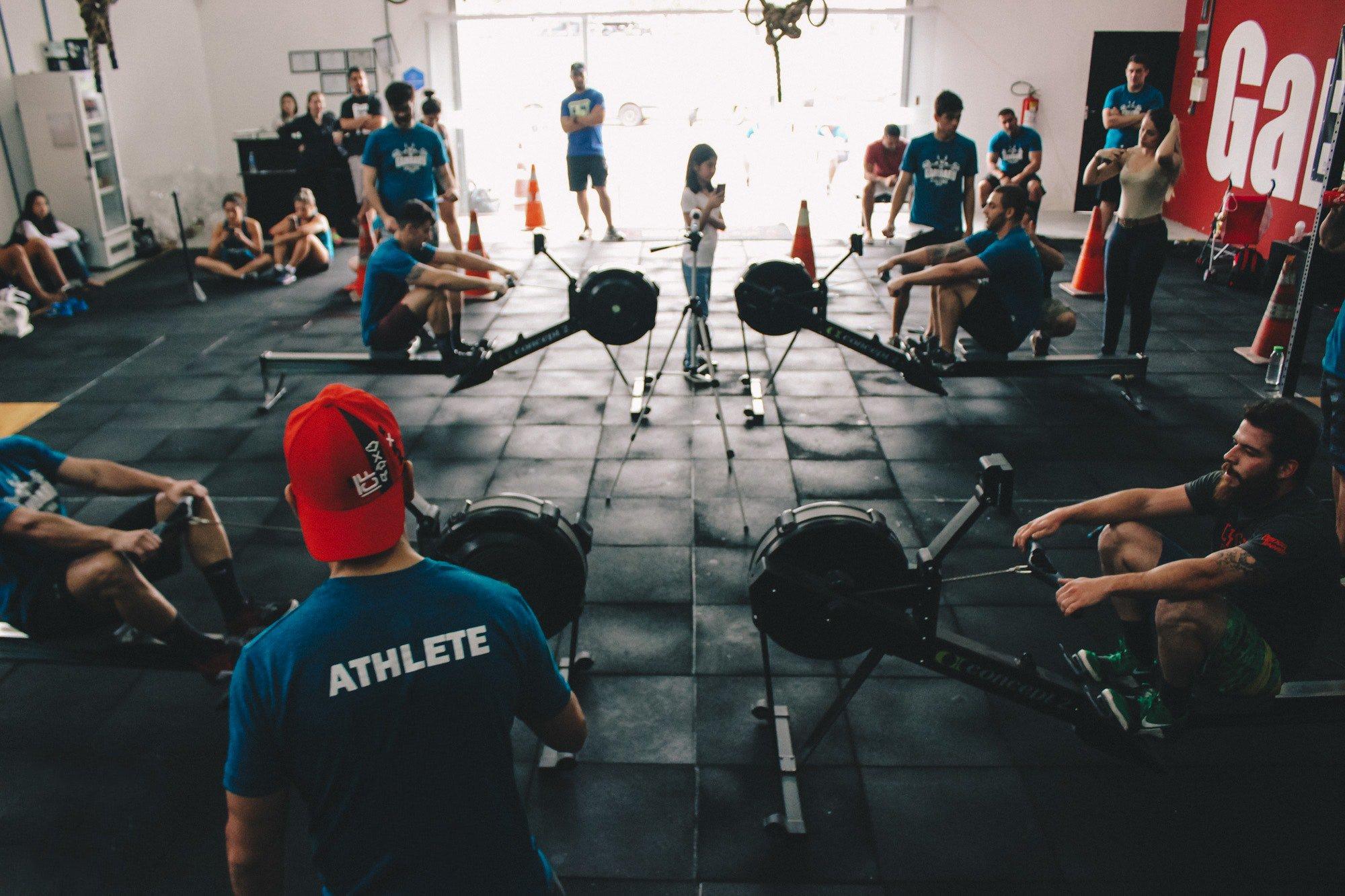One of the most powerful marketing strategies you can utilize is search engine optimization (SEO). By implementing SEO techniques, you can improve your website’s visibility in search engine results, drive organic traffic, and ultimately grow your fitness business. In this article, we will explore how you can use SEO as a marketing strategy for fitness.
Table of Contents
- Introduction to SEO as a Marketing Strategy for Fitness
- Setting Specific Goals for Your Fitness Website
- On-Page Optimization Techniques for Fitness Websites
- Creating High-Quality and Engaging Content for SEO
- Building Backlinks for Your Fitness Website
- Leveraging Social Media for SEO and Marketing
- Optimizing Your Website’s User Experience for Better Rankings
- Monitoring and Analyzing SEO Performance
- Overcoming Common SEO Challenges in the Fitness Industry
- Conclusion
- Frequently Asked Questions (FAQs)
Introduction to SEO as a Marketing Strategy for Fitness
In the highly competitive fitness industry marketing, standing out from the crowd can be challenging. However, with the right SEO strategies, you can increase your chances of reaching your target audience and attracting potential customers. SEO involves optimizing your website and content to rank higher in search engine results pages (SERPs), making it easier for users to find you when they search for fitness-related keywords.
Setting Specific Goals for Your Fitness Website
Before diving into SEO strategies, it’s crucial to define clear and specific goals for your fitness website. What do you want to achieve with your online presence? Do you want to increase website traffic, generate leads, promote your fitness services, or sell fitness products? Setting goals will help you tailor your SEO efforts to align with your business objectives.
On-Page Optimization Techniques for Fitness Websites
On-page optimization refers to optimizing the elements on your website to improve its visibility in search engine results. Here are some essential on-page optimization techniques for fitness websites:
Title Tags and Meta Descriptions
Title tags and meta descriptions are HTML elements that appear in search engine results. Craft compelling and keyword-rich title tags and meta descriptions to entice users to click on your website’s link.
URL Structure
Ensure that your website’s URL structure is clean and user-friendly. Use descriptive words and keywords in your URLs to make it easier for search engines and users to understand what your page is about.
Header Tags
Utilize header tags (H1, H2, H3, etc.) to structure your content and make it more readable. Include relevant keywords in your headings to improve SEO.
Keyword Optimization
Strategically place your target keywords throughout your content, including in the page’s title, headings, body text, and image alt tags. However, avoid keyword stuffing, as it can negatively impact your SEO.
Image Optimization
Optimize your images by using descriptive file names and adding alt tags that include relevant keywords. This helps search engines understand the content of your images and improves overall SEO.
Internal Linking
Include internal links within your website to improve navigation and enhance user experience. Link relevant pages and articles together to guide users and search engines to important content.

Creating High-Quality and Engaging Content for SEO
Content is king when it comes to SEO. Producing high-quality, informative, and engaging content is crucial for attracting and retaining visitors. Here are some tips for creating SEO-friendly content for your fitness website:
Identify Your Target Audience
Understand your target audiences needs, interests, and pain points. Tailor your content to provide valuable information and address their specific concerns.
Write Compelling Headlines
Craft attention-grabbing headlines that not only contain your target keywords but also entice readers to click and read further.
Incorporate Keywords Naturally
Integrate your target keywords organically throughout your content. Focus on providing valuable information rather than keyword density.
Use Subheadings and Bulleted Lists
Break down your content into sections using subheadings (H2, H3, etc.) and utilize bulleted or numbered lists to enhance readability.
Add Visual Content
Include relevant images, infographics, or videos to make your content more engaging and shareable. Optimize these visual elements with descriptive filenames and alt tags.
Building Backlinks for Your Fitness Website
Backlinks are crucial for SEO, as they indicate to search engines that your website is reputable and trustworthy. Here are some strategies to build backlinks for your fitness website:
Guest Blogging
Write informative and valuable guest posts for fitness-related websites or blogs. Include a link back to your website in the author bio or within the content itself.
Partner with Influencers
Collaborate with fitness influencers or industry experts to create content or promote your website. They can share your content with their followers, generating backlinks and increasing your visibility.
Engage in Social Bookmarking
Submit your fitness-related content to popular social bookmarking sites like Reddit, StumbleUpon, or Mix. This can help generate traffic and potential backlinks.
Build Relationships with Other Fitness Websites
Reach out to other fitness websites or bloggers and establish relationships. Offer to contribute content or exchange backlinks to mutually benefit both parties.
Leveraging Social Media for SEO and Marketing
Social media platforms provide an excellent opportunity to promote your fitness website, reach a wider audience, and improve SEO. Here’s how you can leverage social media for SEO and marketing:
Share Your Content
Promote your blog posts, articles, or videos on social media platforms like Facebook, Instagram, Twitter, and LinkedIn. Encourage social sharing and engagement.
Engage with Your Audience
Interact with your followers, respond to comments and messages, and participate in relevant conversations. Building a strong social media presence can positively impact your SEO for your business.
Collaborate with Influencers
Partner with fitness influencers on social media platforms. They can help increase your brand’s visibility, reach a wider audience, and generate backlinks through their endorsements and mentions.
Run Social Media Contests
Organize contests or giveaways on social media platforms to encourage user engagement and increase brand awareness. This can lead to more shares, likes, and potential backlinks.
Utilize Hashtags
Research and use relevant fitness-related hashtags in your social media posts to increase discoverability and reach a broader audience. Hashtags can help you tap into trending topics and conversations.
Optimizing Your Website’s User Experience for Better Rankings
User experience (UX) plays a crucial role in SEO. When users have a positive experience on your website, it signals to search engines that your website is valuable and relevant. Here are some tips for optimizing your website’s user experience:
1. Mobile Responsiveness
Ensure that your fitness website is mobile-friendly and responsive. With the increasing use of mobile devices, optimizing for mobile is essential for both user experience and SEO.

2. Page Loading Speed
Optimize your website’s loading speed to provide a seamless browsing experience. Compress images, minify CSS and JavaScript files, and leverage caching techniques to improve page load times.
3. Clear Navigation
Make sure your website has clear and intuitive navigation. Users should be able to find the information they need quickly and easily. A well-structured navigation menu and internal linking can enhance user experience and improve SEO.
4. Engaging and Easy-to-Read Content
Create content that is engaging, well-formatted, and easy to read. Use short paragraphs, bullet points, and subheadings to break up the text and make it more scannable.
5. Call-to-Action Buttons
Include clear and compelling call-to-action (CTA) buttons throughout your website. These buttons can direct users to take specific actions, such as signing up for a newsletter, scheduling a consultation, or making a purchase.
Monitoring and Analyzing SEO Performance
To ensure the success of your SEO efforts, it’s important to continuously monitor and analyze your website’s performance. Here’s how you can do it:
1. Use Analytics Tools
Utilize tools like Google Analytics to track your website’s traffic, user behavior, and conversions. Analyze the data to gain insights into the effectiveness of your SEO strategies.
2. Monitor Keyword Rankings
Regularly check your website’s keyword rankings in search engine results. Identify keywords that are performing well and those that need improvement.
3. Track Backlinks
Monitor the quantity and quality of backlinks pointing to your website. Identify opportunities to gain more high-quality backlinks and disavow any spammy or low-quality links.
4. Analyze User Engagement Metrics
Pay attention to user engagement metrics such as bounce rate, time on page, and click-through rates. These metrics can help you assess how users interact with your website and identify areas for improvement.
Overcoming Common SEO Challenges in the Fitness Industry
While implementing SEO strategies, you may encounter certain challenges specific to the fitness industry. Here are some common challenges and how to overcome them:
1. Highly Competitive Keywords
Fitness is a competitive industry, and targeting generic keywords can be challenging. Focus on long-tail keywords and niche-specific keywords that are less competitive but still relevant to your target audience.
2. Content Differentiation
Creating unique and valuable content can be challenging when many fitness websites cover similar topics. Find your unique angle, provide original insights, and personalize your content to stand out.
3. Algorithm Updates
Search engine algorithms are constantly evolving. Stay updated with industry news and algorithm changes to adapt your SEO strategies accordingly. Focus on creating high-quality and user-centric content to maintain long-term SEO success.
4. Local Competition
For fitness businesses operating in a specific location, local competition can be intense. Implement local SEO strategies, build strong online reviews and reputation, and leverage your community connections to gain an edge.
5. User Engagement and Retention
It’s not just about driving traffic; engaging and retaining users is equally important. Provide valuable information, interactive tools, and personalized experiences on your website to keep users engaged. Encourage them to subscribe to your newsletter, follow your social media accounts, or join a fitness community to foster long-term relationships.
Conclusion
In today’s digital landscape, leveraging SEO as a marketing strategy for fitness businesses is essential for driving organic traffic, increasing brand visibility, and ultimately, attracting potential customers. By implementing the right SEO techniques, such as keyword optimization, backlink building, content creation, and mobile optimization, you can enhance your website’s search engine rankings and improve user experience. Remember to stay up-to-date with SEO trends, monitor your website’s performance, and continuously optimize your strategies to stay ahead in the competitive fitness industry.
Frequently Asked Questions (FAQs)
1. How long does it take to see results from SEO efforts?
The timeline for SEO results can vary depending on various factors such as competition, website age, and the effectiveness of your strategies. Generally, it takes several months to see noticeable improvements in rankings and organic traffic. However, consistent efforts and optimization can yield long-term benefits.
2. Is it necessary to hire an SEO agency for fitness businesses?
Hiring an SEO agency can be beneficial, especially if you lack expertise or time to handle SEO yourself. An agency can provide professional guidance, conduct in-depth analysis, and implement effective strategies to maximize your online presence. However, with proper research and learning, you can also implement SEO strategies on your own.
3. Can social media impact SEO for fitness businesses?
While social media signals themselves may not directly impact SEO rankings, they play a significant role in driving traffic, brand exposure, and engagement. Sharing valuable content on social media platforms can increase your website’s visibility, attract backlinks, and indirectly contribute to better SEO performance.
4. How often should I update my fitness website’s content?
Regularly updating your website’s content is crucial for SEO. Aim to publish fresh and relevant content consistently, whether it’s through blog posts, videos, or other formats. Additionally, updating and optimizing existing content can also be beneficial. However, focus on quality over quantity and ensure that your content provides value to your audience.
5. Should I focus on local or global SEO for my fitness business?
It depends on the nature and goals of your fitness business. If you have a physical location and primarily cater to a local audience, local SEO should be a priority. However, if you offer online services or target a global audience, a combination of local and global SEO strategies can be beneficial. Consider your target market and adjust your SEO efforts accordingly.


